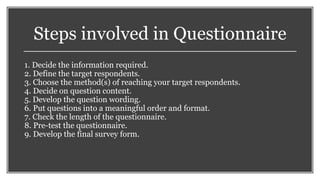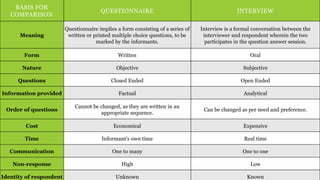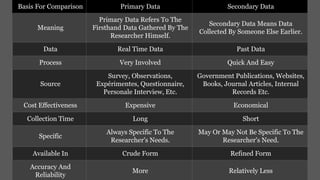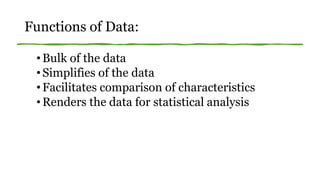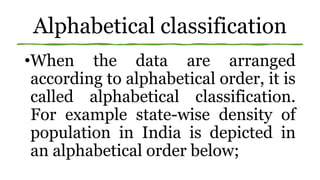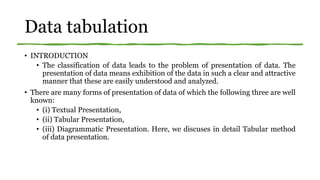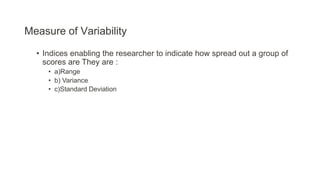The document discusses data collection as a systematic process following the definition of a research problem and design. It elaborates on various methods including primary (interviews, surveys, observation, focus groups, experiments) and secondary data collection, along with their advantages and disadvantages. Additionally, it highlights the importance of careful questionnaire design and data classification to ensure effective data gathering and analysis.

















